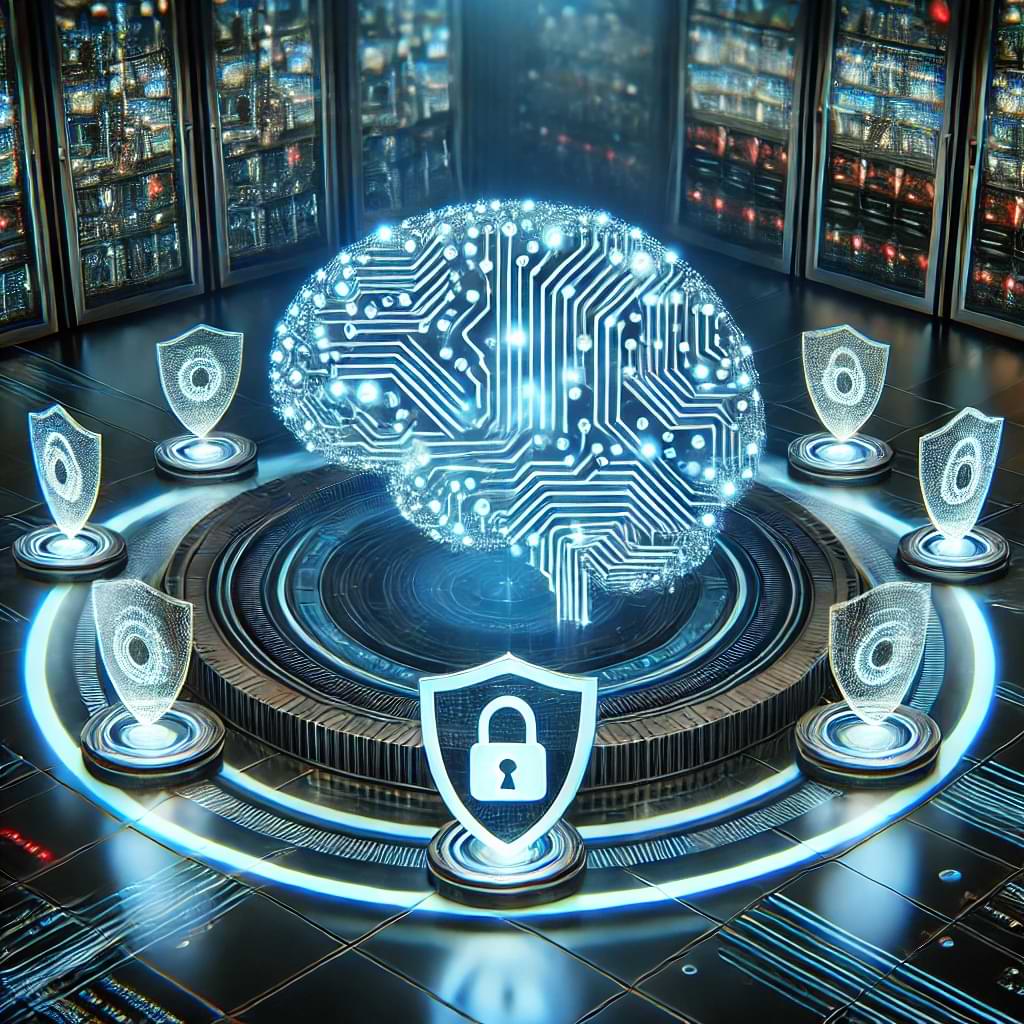As the world becomes increasingly digital, the frequency and complexity of cyber threats are surging. Businesses, governments, and individuals face growing risks of data breaches, ransomware attacks, and identity theft. Traditional cybersecurity methods, which rely heavily on predefined rules and human intervention, are no longer sufficient. To combat evolving cyber threats, AI-powered cybersecurity has emerged as a revolutionary force, offering proactive, automated, and intelligent defense mechanisms
The Growing Need for AI in Cybersecurity:
Cybercriminals are becoming more sophisticated by leveraging automation, AI, and machine learning (ML) to launch attacks. This makes it necessary for cybersecurity systems to evolve at the same pace. AI addresses this by:
- Real-time Threat Detection: AI-powered security systems analyze massive datasets instantly, identifying suspicious patterns that could indicate potential attacks.
- Automated Incident Response: AI can automatically isolate compromised systems, contain threats, and initiate recovery procedures without manual intervention.
- Predictive Analysis: By analyzing historical attack patterns, AI predicts potential vulnerabilities, enabling companies to take preventive measures.
Key Applications of AI in Cybersecurity:
1. Threat Detection and Prevention:
Traditional cybersecurity relies on signature-based detection, which identifies known attack patterns. However, AI introduces behavior-based detection, identifying suspicious activities even without predefined rules.
- AI-Powered Firewalls: These analyze traffic patterns in real-time, blocking potential threats before they infiltrate systems.
- Malware Detection: AI models detect and neutralize zero-day threats by identifying subtle variations in file structures or behaviors.
2. Automated Incident Response:
In the event of a security breach, AI-driven systems respond autonomously, containing the threat and minimizing damage.
- Example: AI-based Endpoint Detection and Response (EDR) platforms automatically isolate compromised endpoints and neutralize the threat.
- Faster Recovery: AI reduces downtime by accelerating containment and recovery procedures.
3. Fraud Detection and Prevention:
AI is transforming fraud detection in the financial sector by monitoring transaction patterns in real-time. It identifies unusual or suspicious activities, reducing false positives.
- Example: Banks use AI to detect anomalous behavior, such as sudden large withdrawals, and automatically flag or block them.
- Biometric Authentication: AI enhances security through facial recognition, fingerprint scanning, and voice authentication.
4. Behavioral Analytics:
AI continuously monitors user behavior to detect deviations from normal patterns. This helps in identifying potential insider threats or compromised accounts.
- Example: AI-enhanced identity and access management (IAM) systems detect unauthorized access attempts or suspicious login behaviors.
- User Authentication: AI identifies irregular usage patterns and flags them for security reviews.
5. Phishing Detection and Prevention:
AI enhances email filtering systems by identifying phishing attempts through content analysis, sender verification, and pattern recognition.
- Example: AI-powered spam filters recognize subtle patterns in phishing emails, even if they bypass traditional filters.
Benefits of AI-Powered Cybersecurity:
1. Faster Threat Detection and Response:
AI systems process massive volumes of data in real-time, allowing immediate detection and response to threats, reducing the risk of damage.
2. Improved Accuracy and Efficiency:
Traditional security systems often generate false positives, leading to alert fatigue. AI minimizes this by refining its detection models over time.
3. Cost-Effective Security:
AI automates repetitive security tasks, reducing the need for large security teams. This lowers operational costs without compromising protection.
4. Continuous Learning and Adaptation:
AI algorithms continuously learn from new threats, making them more effective over time. This ensures that cybersecurity systems stay ahead of emerging attack vectors.
5. Enhanced Privacy and Compliance:
AI-driven security helps organizations comply with data protection regulations by safeguarding sensitive information and identifying potential violations.

Real-World Examples of AI in Cybersecurity:
1. Darktrace:
Darktrace uses machine learning algorithms to detect and respond to emerging threats in real time. Its autonomous system identifies unusual network behaviors, preventing potential breaches.
2. IBM Watson for Cybersecurity:
IBM Watson uses natural language processing (NLP) and machine learning to analyze and classify security data, helping security teams make informed decisions faster.
3. CrowdStrike:
CrowdStrike uses AI-powered endpoint protection to identify and block threats before they cause damage. Its Falcon platform offers automated threat detection and response.
4. Google Chronicle:
Google’s Chronicle uses AI-driven threat intelligence to detect and investigate security incidents at scale, improving response times.
Challenges and Concerns of AI in Cybersecurity:
1. False Positives and Bias:
AI algorithms may occasionally misclassify legitimate activities as threats, leading to false positives and unnecessary disruptions.
2. Data Privacy Issues:
AI systems rely on massive datasets for training, raising privacy concerns regarding the handling of sensitive information.
3. AI-Powered Cyberattacks:
Cybercriminals are also leveraging AI to develop advanced and evasive attacks, making AI-based defense even more crucial.
4. Ethical Concerns:
AI decision-making processes lack transparency, making it difficult to trace how decisions are made, which could raise ethical issues.
The Future of AI-Powered Cybersecurity:
The future of cybersecurity will be heavily reliant on AI. With ongoing advancements in deep learning, neural networks, and adaptive algorithms, AI-based systems will become smarter and more efficient.

1. Autonomous Security Operations:
AI-driven security operations centers (SOCs) will automate most cybersecurity tasks, from threat detection to incident resolution.
2. AI-Powered Threat Intelligence:
Advanced AI models will predict and neutralize threats before they materialize, enhancing proactive defense capabilities.
3. Improved AI Collaboration with Human Teams:
AI will increasingly collaborate with human security analysts, enhancing their productivity by handling repetitive tasks and providing actionable insights.
4. Quantum-Powered AI Security:
With the rise of quantum computing, AI-based encryption algorithms will become more complex and resistant to quantum-powered cyberattacks.
Conclusion:
AI-powered cybersecurity is no longer just a futuristic concept—it is becoming a necessity in the fight against cyber threats. With its ability to detect, prevent, and respond to attacks faster and more accurately, AI is reshaping digital defense. However, while it offers immense benefits, it also comes with challenges such as privacy concerns, ethical risks, and the potential for AI-powered attacks.
As cyber threats continue to evolve, embracing AI-driven security will be essential for organizations to protect sensitive data, maintain trust, and stay ahead of malicious actors. The future of cybersecurity lies in the hands of AI, making it one of the most significant technological advancements of the digital age.






No responses yet